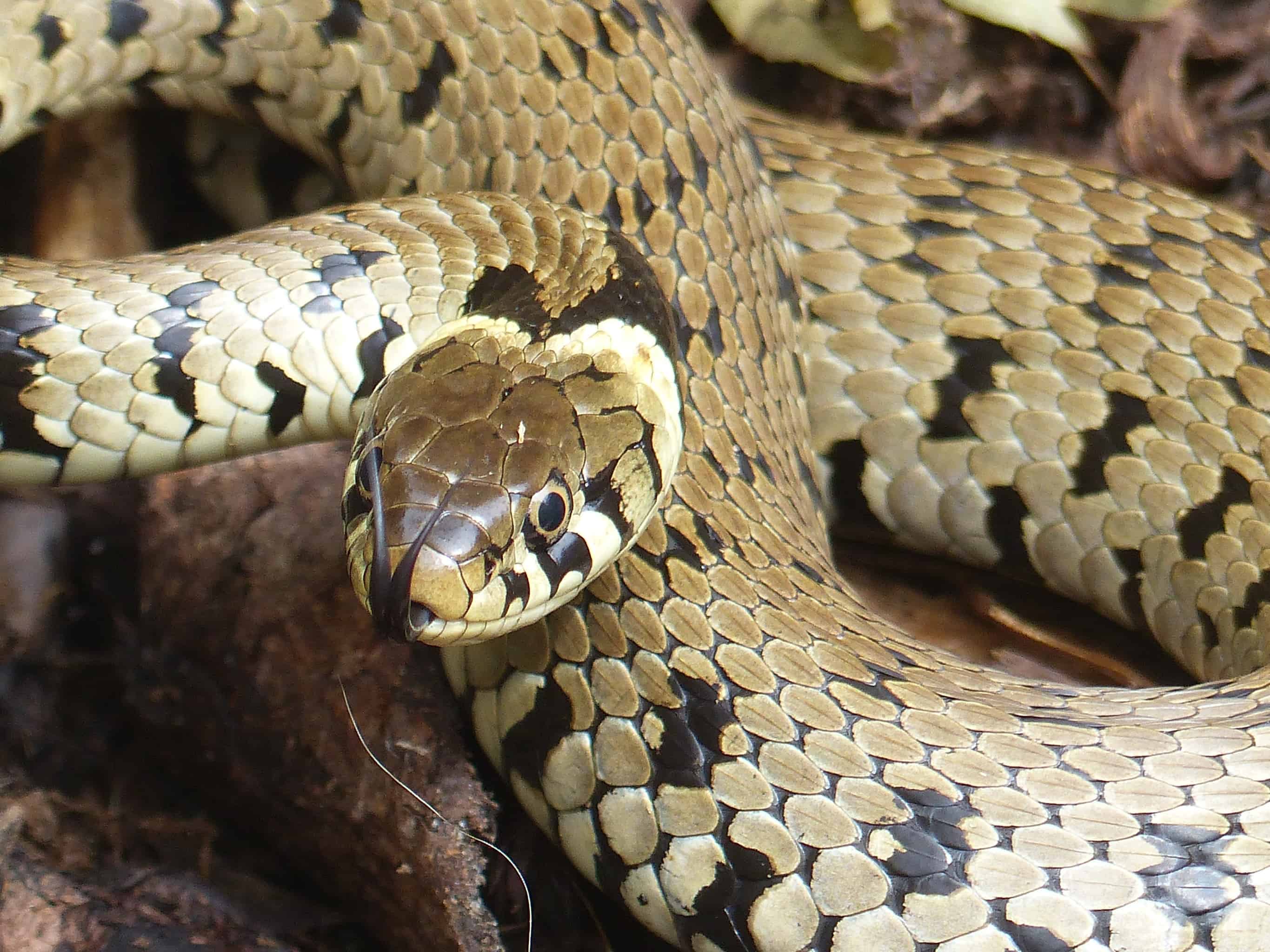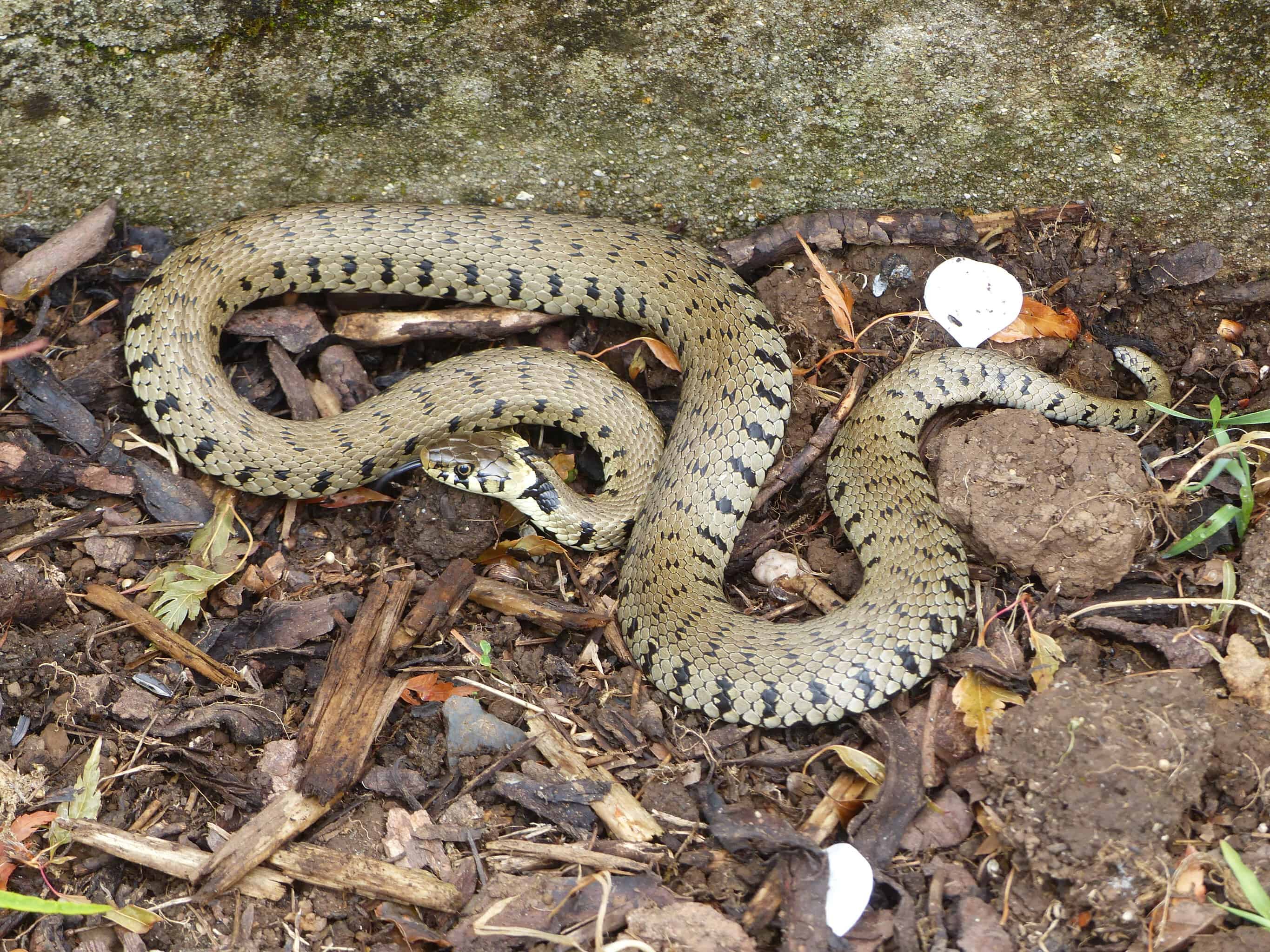
A slight movement in the grass, a soft hiss and Bella, our little cocker spaniel, jumps back in surprise. Calling the dog to come to me we both watch as the beautifully patterned snake, about 70cm long disappears into the undergrowth. This is definitely a good year for these lovely reptiles with several being seen around Belstone. Grass snakes, typically grey/green in colour with a distinctive yellow collar around the neck, can grow to over a metre in length. They are totally harmless to humans feeding mostly on amphibians. Last summer I watched a buzzard swoop down into the garden grab a grass snake and fly off with it still wriggling in its talons.
In the garden at Andrews Corner we sometimes find them in the pond but most frequently in or around our large compost heaps. This is because they love to lay their eggs in the warm rotting vegetation. In June/July we regularly come across three or four sunning themselves on the top of the heaps, but they quickly move away if they sense any vibration or movement. At a temperature between 20 and 26 degrees Celsius, the eggs take about 6 weeks to hatch. Working in the garden in late August early September we often find pencil-slim young snakes that have only recently hatched and, when moving compost in the winter, we come across little batches of hatched egg cases.
These beautiful reptiles are protected by law in Great Britain so please just watch them and then let them quietly head off into the grass. If disturbed they can emit an evil-smelling discharge or sometimes feign death by becoming limp, turning over with the mouth open and the tongue hanging out.

